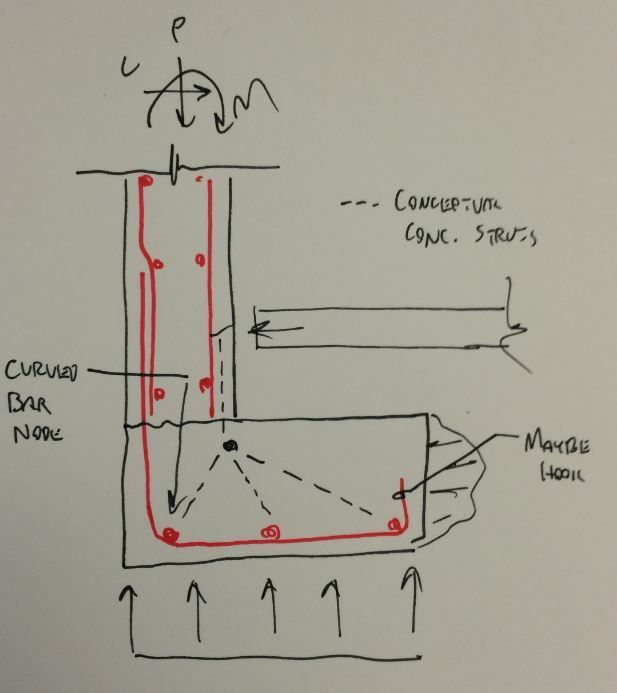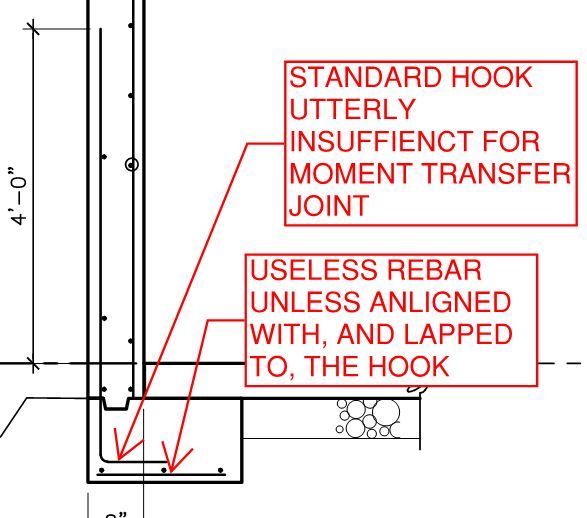design62713
Structural
I am trying to find out which section in ACI-318 talks about L/6 eccentricity limit for designing wall footings? Thanks in advance for help.
Follow along with the video below to see how to install our site as a web app on your home screen.
Note: This feature may not be available in some browsers.

hokie66 said:Somehow, I knew that was coming.
design62713 said:KootK, you are sketch is correct.

hokie66 said:It is just simple statics, you know that.
hokie66 said:If the footing is wider and moment connected to the wall, the reaction centroid moves over, with the soil pressure becoming trapezoidal, then triangular.
mssquared48 said:If the slab and footing are poured monolithically, you can include top bars that extend back into the slab to counter the eccentric loading and alter the soil pressure seen.
hokie66 said:The unknowns you listed are typical of essentially all structural engineering problems. We use models and methods, which are never precise, and don't have to be...The assumption of uniform pressure is anathema to my way of thinking.

![[2thumbsup] [2thumbsup] [2thumbsup]](/data/assets/smilies/2thumbsup.gif)
